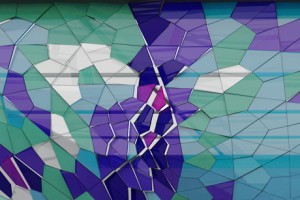Why isn’t the S.NET abbreviation SSNET? That’s what it should be, given the organization’s full name: Society for the Study of New and Emerging Technologies. S.NET smacks of a compromise or consensus decision of some kind. Also, the ‘New’ in its name was ‘Nanoscience’ at one time (see my Oct. 22, 2013 posting).
Now onto 2019 and the conference, which, for the first time ever, is being held in Latin America. Here’s more from a February 4, 2019 S.Net email about the call for abstracts,
2019 Annual S.NET Meeting
Contrasting Visions of Technological ChangeThe 11th Annual S.NET meeting will take place November 18-20, 2019, at the Latin American Faculty of Social Sciences in Quito, Ecuador.
This year’s meeting will provide rich opportunities to reflect on technological change by establishing a dialogue between contrasting visions on how technology becomes closely intertwined with social orders. We aim to open the black box of technological change by exploring the sociotechnical agreements that help to explain why societies follow certain technological trajectories. Contributors are invited to explore the ramifications of technological change, reflect on the policy process of technology, and debate whether or why technological innovation is a matter for democracy.
Following the transnational nature of S.NET, the meeting will highlight the diverse geographical and cultural approaches to technological innovation, the forces driving sociotechnical change, and social innovation. It is of paramount importance to question the role of technology in the shaping of society and the outcomes of these configurations. What happens when these arrangements come into being, are transformed or fall apart? Does technology create contestation? Why and how should we engage with contested visions of technology change?
This is the first time that the S.NET Meeting will take place in Latin America and we encourage panels and presentations with contrasting voices from both the Global North and the Global South.
Topics of interest include, but are not limited to:Sociotechnical imaginaries of innovation
The role of technology on shaping nationhood and nation identities
Decision-making processes on science and technology public policies
Co-creation approaches to promote public innovation
Grassroots innovation, sustainability and democracy
Visions and cultural imaginaries
Role of social sciences and humanities in processes technological change
In addition, we welcome contributions on:
Research dynamics and organization Innovation and use
Governance and regulation
Politics and ethics
Roles of publics and stakeholders
Keynote Speakers
TBA (check the conference website for updates!)
Deadlines & Submission Instructions
The program committee invites contributions from scholars, technology developers and practitioners, and welcome presentations from a range of disciplines spanning the humanities, social and natural sciences. We invite individual paper submissions, open panel and closed session proposals, student posters, and special format sessions, including events that are innovative in form and content.
The deadline for abstract submissions is *April 18, 2019* [extended to May 12, 2019]. Abstracts should be approximately 250 words in length, emailed in PDF format to 2019snet@gmail.com. Notifications of acceptance can be expected by May 30, 2019.
Junior scholars and those with limited resources are strongly encouraged to apply, as the organizing committee is actively investigating potential sources of financial support.
Details on the conference can be found here: https://www.flacso.edu.ec/snet2019/
Local Organizing Committee
María Belén Albornoz, Isarelis Pérez, Javier Jiménez, Mónica Bustamante, Jorge Núñez, Maka Suárez.
Venue
FLACSO Ecuador is located in the heart of Quito. Most hotels, museums, shopping centers and other cultural hotspots in the city are located near the campus and are easily accessible by public or private transportation. Due to its proximity and easy access, Meeting participants would be able to enjoy Quito’s rich cultural life during their stay.
About S.NET
S.NET is an international association that promotes intellectual exchange and critical inquiry about the advancement of new and emerging technologies in society. The aim of the association is to advance critical reflection from various perspectives on developments in a broad range of new and emerging fields, including, but not limited to, nanoscale science and engineering, biotechnology, synthetic biology, cognitive science, ICT and Big Data, and geo-engineering. Current S.NET board members are: Michael Bennett (President), Maria Belen Albornoz, Claire Shelley-Egan, Ana Delgado, Ana Viseu, Nora Vaage, Chris Toumey, Poonam Pandey, Sylvester Johnson, Lotte Krabbenborg, and Maria Joao Ferreira Maia.
Don’t forget, the deadline for your abstract is *April 18, 2019* [extended to May 12, 2019].
For anyone curious about what Quito might look like, there’s this from Quito’s Wikipedia entry,

Good luck to all everyone submitting an abstract.
*Date for abstract submissions changed from April 18, 2019 to May 12, 2019 on April 24, 2019
